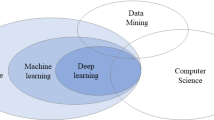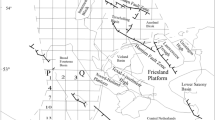Abstract
The determination of crustal deformation can be measured by geodetic observations of permanent global positioning system (GPS) stations. In this study, the coseismic displacement of 11 August 2012 with magnitudes 6.5 Mw and 6.3 Mw of Ahar–Varzegan earthquakes has been investigated based on GPS observations and deep learning. For this purpose, data were processed at a 30-s rate of 13 Iran geodynamic stations with distances of 25 to 160 km from the earthquake epicenter and then were entered into deep learning. The results show that the horizontal displacement field of the Ahar–Varzegan earthquake has a mean value of 27.93 cm and 15.35 cm, which is estimated with the root mean square error (RMSE) of ±0.24 cm. Vertical displacement has been neglected due to the low accuracy of the z component and the low density of stations in the central seismic range. Also, the right lateral fault (cause of Ahar–Varzegan earthquake) to seismic displacement is evident; field observations and previous research confirm coseismic displacement values and right latera fault.




Similar content being viewed by others
References
Akoglu, A. M., Jónsson, S., Çakir, Z., Zamani, B., Karimzadeh, S., Wang, T., & Feng, G. (2014). InSAR analysis of the coseismic deformation of the August 11th, 2012 Ahar-Varzaghan (NW Iran) earthquakes (Mw 6.4 and 6.3). In EGU General Assembly Conference Abstracts (Vol. 16)
Ansari S (2016) Co-seismic stress transfer and magnitude-frequency distribution due to the 2012 Varzaqan-Ahar earthquake doublets (Mw 6.5 and 6.4), NW Iran. J Asian Earth Sci 132:129–137
Dach R, Lutz S, Walser P, Fridez P (2015) Bernese GNSS software version:5.2
Djamour Y, Vernant P, Nankali HR, Tavakoli F (2011) NW Iran-eastern Turkey present-day kinematics: results from the Iranian permanent GPS network. Earth Planet Sci Lett 307(1-2):27–34
Elshambaky HT (2019) Enhancing the predictability of least-squares collocation through the integration with least-squares-support vector machine. Journal of applied geodesy 13(1):1–15
Elshambaky HT, Kaloop MR, Hu JW (2018) A novel three-direction datum transformation of geodetic coordinates for Egypt using artificial neural network approach. Arab J Geosci 11(6):1–14
He P, Wang Q, Hetland E, Chen G, Ding K, & Li S (2016, December). Coseismic and early postseismic deformation for the 2015 Mw 6.4 Pishan earthquake from InSAR and GPS observations. In AGU Fall Meeting Abstracts
Jiang G, Xu C, Wen Y, Xu X, Ding K, Wang J (2014) Contemporary tectonic stressing rates of major strike-slip faults in the Tibetan Plateau from GPS observations using least-squares collocation. Tectonophysics 615:85–95
Karimzadeh S, Samsonov S, Matsuoka M (2017) Block-based damage assessment of the 2012 Ahar-Varzaghan, Iran, earthquake through SAR remote sensing data. In: In 2017 IEEE International Geoscience and Remote Sensing Symposium (IGARSS) (pp. 1546-1549). IEEE
Kim T, Song J, Kwon OS (2020) Pre-and post-earthquake regional loss assessment using deep learning. Earthq Eng Struct Dyn 49(7):657–678
Ma J, Dong L, Zhao G, Li X (2019a) Qualitative method and case study for ground vibration of tunnels induced by fault-slip in underground mine. Rock Mech Rock Eng 52(6):1887–1901
Ma J, Dong L, Zhao G, Li X (2019b) Ground motions induced by mining seismic events with different focal mechanisms. Int J Rock Mech Min Sci 116:99–110
McClusky SC, Bjornstad SC, Hager BH, King RW, Meade BJ, Miller MM, Monastero FC, Souter BJ (2001) Present day kinematics of the eastern California shear zone from a geodetically constrained block model. Geophys Res Lett 28(17):3369–3372
McKenzie D, Jackson J (1986) A block model of distributed deformation by faulting. J Geol Soc 143(2):349–353
Memarian Sorkhabi O, Asgari J, Amiri Simkooei A (2021a) Analysis of Greenland mass changes based on GRACE four-dimensional wavelet decomposition. Remote Sensing Letters 12(5):499–509
Memarian Sorkhabi O, Asgari J, Amiri-Simkooei A (2021b) Wavelet decomposition and deep learning of altimetry waveform retracking for Lake Urmia water level survey. Mar Georesour Geotechnol:1–11
Momeni SM, Tatar M (2018) Mainshocks/aftershocks study of the August 2012 earthquake doublet on Ahar-Varzaghan complex fault system (NW Iran). Phys Earth Planet Inter 283:67–81
Ragheb AE, Clarke PJ, Edwards SJ (2007) GPS sidereal filtering: coordinate-and carrier-phase-level strategies. J Geod 81(5):325–335
Robles-Avalos JC, González-Ortega JA, González-García JJ, Vidal-Villegas JA (2019) Coseismic displacements and Mw estimation of the El Mayor-Cucapah earthquake, Mexico, from GPS source spectra. Geofis Int 58(2)
Rouet-Leduc B, Hulbert C, McBrearty IW, Johnson PA (2020) Probing slow earthquakes with deep learning. Geophys Res Lett 47(4):e2019GL085870
Sorkhabi OM (2021) Deep learning of total electron content. SN Applied Sciences 3(7):1–9
Sorkhabi OM, Asgari J, Amiri-Simkooei A (2021) Monitoring of Caspian sea-level changes using deep learning-based 3D reconstruction of GRACE signal. Measurement 174:109004
Wang R, Parolai S, Ge M, Jin M, Walter TR, Zschau J (2013) The 2011 Mw 9.0 Tohoku earthquake: comparison of GPS and strong-motion data. Bull Seismol Soc Am 103(2B):1336–1347
Wen Y, Guo Z, Xu C, Xu G, Song C (2019) Coseismic and postseismic deformation associated with the 2018 Mw 7.9 Kodiak, Alaska, earthquake from low-rate and high-rate GPS observations. Bull Seismol Soc Am 109(3):908–918
Yadav RK, Nankali H, Kundu B, Patel P, Gahalaut VK (2016) Finite fault slip models for the 11 August 2012 Varzaghan-Ahar, NW Iran earthquakes (Mw 6.4 and 6.3) from near-field GPS measurements of coseismic offsets. J Asian Earth Sci 115:268–272
Yadav RK, Roy PNS, Gupta SK, Khan PK, Catherine JK, Prajapati SK et al (2017) Rupture model of Mw 7.8 2015 Gorkha, Nepal earthquake: constraints from GPS measurements of coseismic offsets. J Asian Earth Sci 133:56–61
Ziggah YY, Youjian H, Tierra A, Konaté AA, Hui Z (2016) Performance evaluation of artificial neural networks for planimetric coordinate transformation—a case study, Ghana. Arab J Geosci 9(17):1–16
Acknowledgements
We are grateful to the Iran national cartographic center for providing the GPS data.
Author information
Authors and Affiliations
Corresponding author
Ethics declarations
Conflict of interest
The authors declare that they have no competing interests.
Additional information
Responsible Editor: Longjun Dong
Rights and permissions
About this article
Cite this article
Sorkhabi, O.M., Alizadeh, S.M.S. Coseismic displacement of Ahar–Varzegan earthquakes based on GPS observations and deep learning. Arab J Geosci 14, 1859 (2021). https://doi.org/10.1007/s12517-021-08278-7
Received:
Accepted:
Published:
DOI: https://doi.org/10.1007/s12517-021-08278-7




